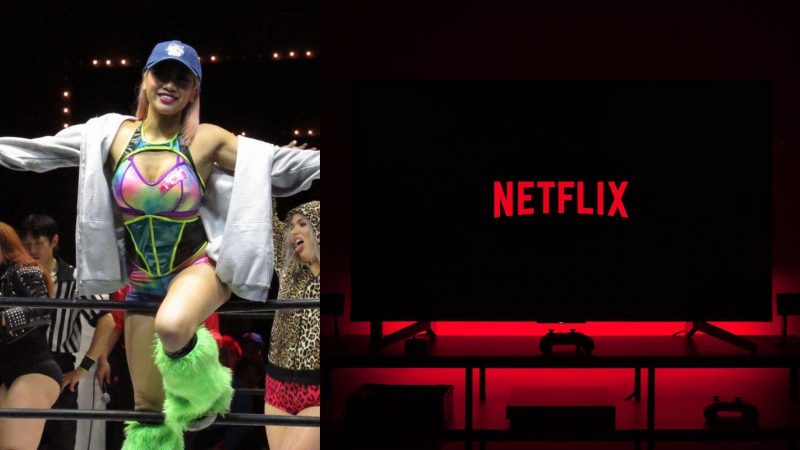
June 19, 2020
What Went Wrong at ‘Terrace House’?
Reflecting on the Japanese reality show after the death of member Hana Kimura
Although the ritual of watching television is changing as rapidly as our screens shrink, TV has always lived with us, accompanying us before we sleep or as we commute to work. Not only the representations of ordinary reality on our laptops and phones, but also the role of TV in our daily lives convinces us, maybe subconsciously, that TV is a truthful medium.
The true value of a program may be disputed, from claims of fake news to an audience’s natural understanding that a drama is fictional, but television remains tied to real life. Whether a program is fictional or not, we like seeing familiar, real-life situations represented on screen.
Add the non-scripted element of a reality show and the heightened sense of familiarity allures viewers. Add the subdued charm and mellow, seemingly untheatrical facade of “Terrace House” and audiences rejoice.
The serenity so central to the show was abruptly interrupted, however, not by the hiatus imposed on the most recent series “Terrace House: Tokyo 2019–2020” due to the COVID-19 pandemic, but by the death of Hana Kimura on May 23, house resident and professional wrestler. She was 22.
Her last Instagram post was a picture of her and a cat, with the caption “I love you. Please live long and happy. I’m sorry.” Ever since joining the cast in fall 2019, she was bombarded with antagonistic messages and comments on social media, igniting talks on how to handle online slander. Members of the ruling Liberal Democratic Party have started to consider measures for identifying social media abusers, as well as toughening the penalties for cyberbullying and restricting abusive comments.
この投稿をInstagramで見る
Four days after the news broke, Fuji Television terminated “Terrace House: Tokyo 2019–2020” and announced that it would not distribute the episodes on its online streaming service FOD. Netflix U.S. will not distribute new episodes, though the two episodes that were already released are still available on the platform.
Government ministries, SNS services and streaming platforms alike have reached somewhat of a standstill. The line between blocking abuse and suppressing free speech is thin. Further, the whole “Terrace House” franchise, however beloved, might be nearing its end — going on is risky.
Before exploring these points further, we have to consider the style of the show, as well as the role of social decorum in the events leading (directly or not) to her death. On the day that she died, Kimura tweeted, “I have received nearly 100 honest opinions every day and I cannot deny that I got hurt,” suggesting that the response to her performance on “Terrace House” had a role in her apparent suicide.
The harassment reached a fever pitch after the release of Part 4, Episode 38, “Case of The Costume Incident,” on March 31. In this episode, Kimura yells at fellow house member Kai Kobayashi. He had accidentally washed her expensive and prized wrestling costume, causing it to shrink. Before she walks out of the room she snatches his hat off. The outburst is not just about his mistake, however, she unleashes her building frustration with what she perceived as Kobayashi’s lack of respect for others. This spat is what prompted the terrible vitriol towards Kimura, including tweets telling her to “hurry up and disappear.”
We should also think about the possible causes of Kimura’s abuse. Should the show continue if it dresses people’s lives in cinematic charm to the point that they become inseparable from their TV characters?
What the brutal response has revealed are flaws in the structure of “Terrace House.” These same qualities are also great assets, responsible for its raging popularity and critical approval.
There are two main things that distinguish the show from the standard reality TV fare. First, “Terrace House” blurs the line between TV and reality: not only can cast members enter and leave the house as they please, but there is a panel of celebrities that provide commentary and fling witticisms throughout (guiding viewers on what to make of often ambiguous interactions). The panel is the mediator between cast and audience. And most importantly, the house residents are shown watching the footage of themselves for the week — and the panelists watch them watching themselves.
So, the cast is perfectly aware of how they appear on camera, and it is up to them to “edit” their behavior the next week. The stars are abnormally self-aware, perhaps contributing to the comparative poise of the show and linking them in real time to their characters, online feedback and all.
What we see on a given week of “Terrace House” is the result of a lot of research: seeing how people react to you online, watching and criticizing yourself, maintaining a painful awareness of how you interact with your housemates and how you appear to everyone watching.
この度、番組に出演されていた、
木村花さんがご逝去された事について、
改めてお悔やみ申し上げます。
またご遺族の方々にも深く哀悼の意を表します。— TERRACE HOUSE (@TH6TV) May 27, 2020
Second, the contents of the show — the dialogue, the composition of the shots, even that amazing soft lighting and muted color palette — are set up to look like they are blurring the line between TV and reality. Maybe because we are so used to furious catfights and hasty romances, we marvel at the glaring “realism” of “Terrace House,” which relishes in silent tension and scenes of politely chewed meals.
The shots have been compared to the films of Yasujiro Ozu, known for his “staged naturalism.” For the reality show, this translates to periods of silence, mundane conversation and cinematic beauty. Characters are arranged carefully, symmetrically, making the naturalism all the more immersive.
And, as in real life, we have to dig around in the drama to find out its significance, like the costume incident. In Part 3 Episode 34, “Case of The Bottled Beer Incident,” one of the guys shares a bottle of beer with a new roommate he finds attractive. He drinks with his lips on the bottle when the couple are alone; when the other members arrive, he tips the bottle without touching it to his lips. The panelists are horrified.
View this post on Instagram
The gravity of such little gestures and the convincing cinematic effects are what makes “Terrace House” so good, but they also encourage us to treat the show like a movie, with a specific and uniform tone and clear motifs, with characters to identify, clues to be picked up on and relationships to be resolved.
When Kimura momentarily shattered the pure and tidy tone by yelling rather than tiptoeing around her grievances (a precedent previous seasons), people were jarred by her frankness. Someone acted out of line and the movie was compromised.
Because the show is so meticulously put together, we are led to forget, even with the panelists watching alongside us, that it is put together. It all feels so real, it is easy to assume that the stars are the exact same person in real life, and that the on-screen drama is natural, which is not the case. In fact, “Terrace House” is probably more meticulously manipulated than any other popular program in the genre.
Unfortunately, it seems that people took Kimura’s outburst as representative of her character (the real one): disagreeable, aggressive, hotheaded. Since the show urges its participants to interact with the audience and their televised selves, Kimura must have experienced these misinterpretations firsthand.
This conclusion is hasty and uninformed. There is another thing wrong with it: even if that scene was totally natural, even if the presence of the camera, all the editing and the interruptions of the panel did not add any emotional weight, she did nothing wrong. She did not hit him; she did not jeer at him. Even the panelists understood and acknowledged that these feelings had been building up.
In a celebrity culture where female agreeableness is so valued, the outburst not only broke the rules of the show, its internal logic and social codes, but also the unspoken rules of feminine decorum. She was not excessively harsh and she was not even wrong, but her position as a “Terrace House” character, a famous woman and a woman in Japan made her the victim of anger boundlessly more brutal and senseless than her initial upset.
There is no doubt that cyberbullying regulations are important to tempering the kind of abuse she received, but cyberbullying was only the mechanism used to unleash frustrations with, effectively, a television personality.
We should also think about the possible causes of Kimura’s abuse. Should the show continue if it dresses people’s lives in cinematic charm to the point that they become inseparable from their TV characters? Why were viewers so repulsed by her upset? Closely eyeing Twitter is one way to prevent direct attacks, but these impulses, to dehumanize celebrities, to castigate noncompliance, lurk far deeper.







